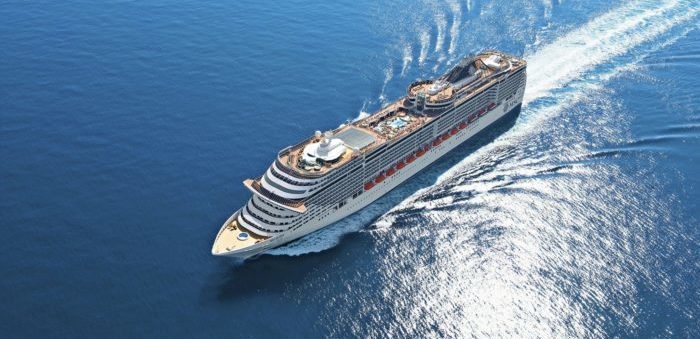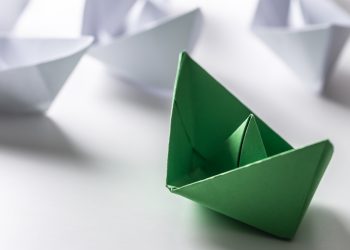Cruise lines are transforming the modern fleet with new technologies and designs that sustainably reduce the industry’s environmental footprint, notes Cruise Lines International Association (CLIA).
“The cruise industry recognizes the importance of investing in innovative ship technology to preserve our environment and provide an eco-friendly travel experience,” said Cindy D’Aoust, president and CEO, CLIA. “And, with each new build, CLIA Cruise Line Members raise the bar for developing environmentally friendly ships.”
CLIA Cruise Line Members are investing $1 billion in environmental technology, such as:
- Air Emissions Reduction
Cruise lines continually innovate to reduce air emissions. One example is exhaust gas cleaning systems (EGCS), which offer an innovative alternative to the use of low sulfur fuels to satisfy emissions requirements and reduce the level of sulfur oxides in a ship’s exhaust by as much as 98 percent. Cruise lines pioneered the use of this technology, and others, in the marine environment.
- Advanced Wastewater Treatment Systems
In keeping with cruise lines’ continual focus on best practices that often exceed regulatory requirements, CLIA oceangoing Cruise Line Members have committed to not discharging untreated sewage anywhere in the world. Many cruise lines operate Advanced Wastewater Treatment Systems (AWTS) to treat wastewater beyond the requirements of most waste treatment facilities of coastal cities.
- Solar Panels
To improve fuel efficiency and keep cruising eco-friendly, some cruise lines use solar energy to power certain ship’s equipment. Since cruise ships spend significant time under the sun, solar panels are a logical source of supplementary energy for ships, as practical with a vessel’s design. Installation of solar panels can generate clean energy power and decrease dependence on fuel-generated electricity to help run ship systems including lighting.
- Heating, Ventilation and Air Conditioning Systems
Heating, ventilation and air conditioning (HVAC) systems require significant amounts of energy. Since most CLIA Cruise Lines Members’ itineraries involve warmer environments, the energy consumption of air conditioning systems is an important target of ship-board efficiency efforts. Newer ship systems are designed to pump only the amount of chilled water required for the cooling demand, which results in significant energy savings.
- Technologies for Use of LNG as an Alternative Fuel
Cruise lines are launching ships powered by liquefied natural gas (LNG), eliminating soot particles and sulfur oxides, to reduce fuel consumption and CO2 emissions. For newly launched vessels, new dual-fuel engines allow for the efficient and effective use of multiple fuels, such as LNG and traditional fuel oils. Innovations in tank design and placement has also allowed for safe storage of LNG onboard. To date, seven cruise lines have announced plans to build up to 16 LNG-propelled cruise ships, with the first one expected in service in 2019.
































































This is pure greenwashing, and in the wrong way for several items:
– scrubbers are just moving pollution from air to sea. The SOx that is removed from exhaust, is sent as sulfuric acid in the Sea, at a very low pH, even when dilution is respected. There are also much pollution taken from exhausts going to sea (particulates, heavy metal…). It can not be called eco-friendly. It is the contrary. Scrubbers were allowed so that HFO could still be used.
– solar panels will bring a few dozens of kW, during daylight. To be compared to the up to dozens of MW requested by the ship at Sea… This is 0.1 % of installed power, and so far less of 24h consumption.
– HVAC. There is little (or unexisting) effort. The effort cited here above in the paper is just telling that they are doing today what was possible years ago.
– LNG. This is only for some of the future ships. What about the existing ones ? A cruise ship is in use during decades, which means that ships built today will be in use after 2050.
Bettter than listen only to CLIA, one should compare the income of such companies at CLIA, vs. the true investment in Environment they are making.
Scrubbers are all but environmental technology: it is only sending to the sea the pollution that was sent before in air. And in a very concentrated way.
The reason to install scrubbers is not at all Environment, but Business only: it allows them using cheap dirty HFO with up to 3.5%sulphur everywhere, even after 2020.
For the other very few items they present beyond regulation, it is either for saving fuel and money, either for corporate image to keep passengers onboard.
CLIA should really stop greenwashing. As a luxury industry, it is twice more shocking that they are not objective leaders for Environment.